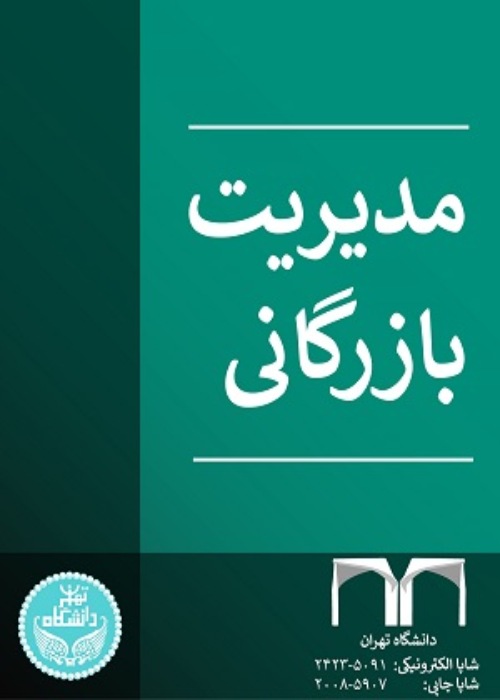Cognitive Neurological Investigation of Organizational Leaders’ Brain in the Strategic Thinking Activity: How to Design Cognitive Tasks for a Quantitative Electroencephalography (QEEG) Based Approach?
Author(s):
Article Type:
Research/Original Article (دارای رتبه معتبر)
Abstract:
Objective
Over the past two decades, several conceptual models have been proposed for strategic thinking, but few tools have been developed to measure and study strategic thinking at the individual level. Neuropsychological techniques, as they have been used to study and measure the creative thinking over the past few decades, can help us in studying strategic thinking. In this paper, at first, conceptual models and different dimensions of strategic thinking and its measurement methods are reviewed. Similar researches in the field of creativity conducted using neurological approaches and brain imaging tools can be considered as a good guideline to help doing such a research. To study the function of the brain, it is necessary for the person, under investigation, to be given a cognitive assignment in order to think about it. While thinking about that assignment, their brain function can be studied, so the characteristics of cognitive assignments are described for the study of strategic thinking, and cognitive tasks for such studies are proposed to be selected within the field of electroencephalography. Finally, the results of a laboratory study are reviewed and the results will be analyzed.Methodology
The present research is a part of a comprehensive fundamental research. This research is descriptive and exploratory in nature and a pilot project was designed to collect and analyze the data. Due to the nature of the subject, the present research is a type of pilot project in which the dependent variable (brain wave patterns) has been studied after providing an independent variable (strategic thinking). The present study describes how to design cognitive assignments to study strategic thinking by reviewing the literature on strategic thinking and research on creativity in electroencephalography, and then, as a preliminary study in a laboratory research, examines strategic thinking and presents its results. A sample size of ten managers and middle managers from a nongovernmental educational center has been selected based on availability factors and brain imaging was done within two states of relaxation and strategic thinking using electroencephalographic tools.Findings
The results show that changes in alpha wave intensity were significant in all regions of the cortex compared to other waves. Significant changes in the absolute intensity of alpha waves are comparable with the observed results in creativity-related experiments. In addition, changes in the intensity of alpha waves (12-8 Hz) were compared with each other in PT, TT, and ST cognitive assignments. The results indicate that changes in the intensity of alpha waves were significant in comparison with changes in other brain wave. During the day when we are awake, brain imaging by electroencephalography shows different types of brain electric waves at a time. These waves are classified from the lowest frequency (highest wavelength) to the highest frequency (shortest wavelength) as Delta, Theta, Alpha, Beta, and Gamma respectively. Alpha waves are in the range of 8 to 13 Hz and also the changes in the intensity of alpha waves (12 Hz) were compared within the three PT, TT, and ST cognitive assignments. Based on the paired T-test results, there is no significant difference in the alpha waves intensity variation between the cognitive tasks of ST and TT. But, there is a significant difference in the alpha waves intensity variation between the cognitive tasks of ST and PT.Conclusion
The human brain should be able to create a large amount of alpha waves for creative inspiration. Creative people can use alpha-generated waves to solve the problems they face. Those lacking creativity, when faced with a problem, cannot produce more alpha waves, and consequently they cannot have creative ideas to solve problems. The proper level of alpha waves leads to relaxation on free time and enjoying the environment, optimal performance, less anxiety, stronger immune system, positive thinking, mind and body integrity, intuition, inner-thinking, emotional balance, euphoria, inner awareness and increased hormonal secretion of Serotonin. The results show that PT cognitive assignment is not suitable for studying strategic thinking. It seems that the cognitive role of TT is more appropriate for the study of strategic thinking in the field of electroencephalography, because the changes in the alpha intensity during this cognitive assignment showed a greater increase compared to the other two cognitive tasks. With regard to ST cognitive assignment, one can use this cognitive assignment if they follow the correct guidelines.Keywords:
Language:
Persian
Published:
Quarterly Journal of Business Management, Volume:11 Issue: 39, 2019
Pages:
63 to 86
magiran.com/p1937744
دانلود و مطالعه متن این مقاله با یکی از روشهای زیر امکان پذیر است:
اشتراک شخصی
با عضویت و پرداخت آنلاین حق اشتراک یکساله به مبلغ 1,390,000ريال میتوانید 70 عنوان مطلب دانلود کنید!
اشتراک سازمانی
به کتابخانه دانشگاه یا محل کار خود پیشنهاد کنید تا اشتراک سازمانی این پایگاه را برای دسترسی نامحدود همه کاربران به متن مطالب تهیه نمایند!
توجه!
- حق عضویت دریافتی صرف حمایت از نشریات عضو و نگهداری، تکمیل و توسعه مگیران میشود.
- پرداخت حق اشتراک و دانلود مقالات اجازه بازنشر آن در سایر رسانههای چاپی و دیجیتال را به کاربر نمیدهد.
In order to view content subscription is required
Personal subscription
Subscribe magiran.com for 70 € euros via PayPal and download 70 articles during a year.
Organization subscription
Please contact us to subscribe your university or library for unlimited access!



